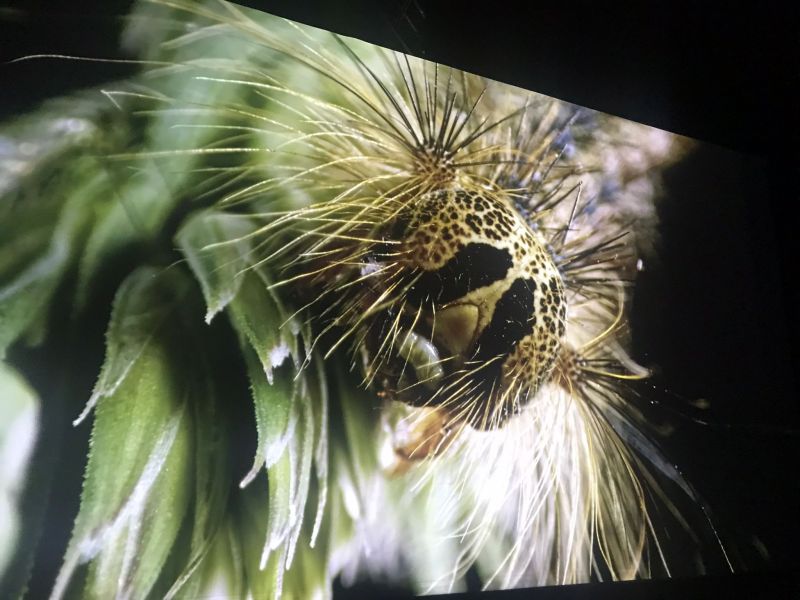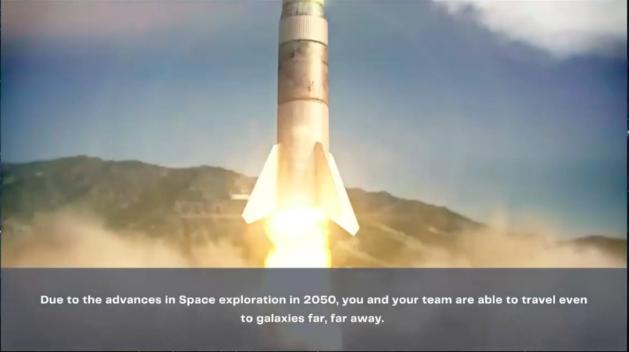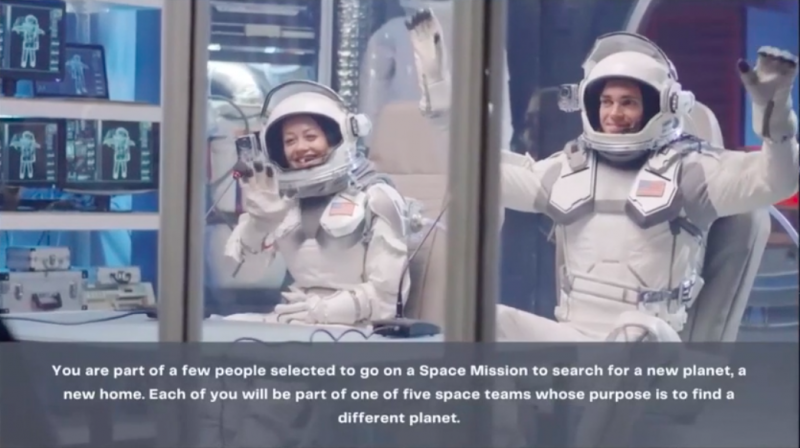Graciela Guadarrama Baena, futurist and design researcher based in Mexico City, has been invited by U+ as one of the ten people composing the team project behind last year’s European program Stories from 2050. The subtitle is attractive: ‘Radical forward-looking imagery of sustainability opportunities and challenges ahead’. ‘Radical’ in both form and content, because they worked with communities ‘beyond established elites’, and focused on stories shaping thought-provoking alternative realities. Let’s see how creating non-standard imagery of the future can help us shape our shared future!
The workshop: projecting yourself in a story
Graciela is here to offer us a taste of the workshops created for the project. We start with a bit of reading. She chose 3 of the 25 stories from the project’s booklet Stories from 2050, and randomly split all the participants into 3 groups, one story for each group. The story my group is assigned to - called Aeras (p.73 of the booklet) - is very exciting: a mysterious planet, an encrypted message, gigantic insects, robots, quantum physics… All the ingredients for a classic science fiction novel! The story describes a distant utopian planet where gigantic flora and fauna develop wildly and beautifully, along with a few mysterious anthropomorphic beings. After sending a robot to explore this planet of abundance, humans living on Earth and Mars prepare to launch an expedition for colonization. The story ends with the decoding of an encrypted message received through the robotic probe:
‘We have found true freedom and transcendence, at the cost of our ancient planetary system and our predecessors. Don’t infect our new mindset, or there will be consequences.’
For the next activities, we meet in a collaborative online workspace (Mural) designed like a board game: each activity of the workshop is described and organized with a dedicated space for each group. Virtual post-its are arranged in the ‘Activity 2’ section, for us to write our opinions on whether or not we would like to live in the world we just read about. We are four participants, with four different understandings of the story: the interpretations are all the more plural as the story is short and ambiguous. Before discussing our potential house move to this utopian planet, we must start by sharing our interpretations, as they influence our capacity of projecting ourselves in the story. For my part, I wouldn’t want to live in a world where closed borders seem to be the condition for utopia. Or maybe I would live there as one of the giant insects: they seem to thrive without humans’ destructive activities. The other participants are happily inspired by the perspective of the ‘new mindset’ described in the message, which has the advantage of being undetermined enough for any ideal to be projected into it.

The fact that we each chose to focus on certain aspects of the story enables us to look at it from different standpoints and leads to rich conversations on our political perspectives. Even more interesting: we rapidly step away from the original question of the activity - that we considered unfit for our story - and start questioning:
‘Who’s talking?’, ‘what is the story telling us?’
It encourages us to reflect on how a narrative is constructed and for what purpose. For example: why is it obvious for us readers that the people sending the encrypted message are the identified anthropomorphic beings? What does it say about our egocentric vision of ourselves as representatives of planet Earth? Or as the French philosopher Vinciane Despret would put it: ‘With whom will the aliens want to negotiate?’, underlining the narrowness of our imagination when we think aliens would want to meet with us first, instead of cows.
The workshop: bringing worlds together
The third activity invites us to share our thoughts on what we think of the interactions between the people (individuals and collectives), the living beings and the planet in the world described. A question remains in our story: who sent the encrypted message? We have no idea of the kind of power relationships that order the planet, so we can only take the message at its word. We only know this planet from afar, so we must imagine the conditions for a relationship between our worlds. Once again, we have many questions and even more possible answers:
- Is conflict inevitable when ways of being are so different? Is our extractive mindset so deeply anchored that we are incapable of being in relationship with Aeras’ inhabitants without thinking of exploiting their resources?
- Can we be ‘infected’ by their (supposedly) free mindset? What would we be prepared to question in our own system to actively learn from them?
- Who would the participants be for an expedition aiming to build trust and learn from the beings in this new world instead of colonizing it and them? Scientists, anthropologists, artists, people randomly selected from the general public?

The last activity gathers the participants from the 3 groups, and invites each group to share what they have learned and what they would do if they were in charge of the transition from our world to the world described in their stories. The first group was assigned to a dystopian story called Hunting Shadows (p.86 of the booklet), featuring a planet similar to the world described in the famous science fiction novel Dune, by Frank Herbert. Their challenge is obviously to avoid the future of a dry conflictual world by taking care of our environmental resources: save water, plant trees, and other mitigation strategies to face the climate crisis. The second group (mine) shares the importance of shaping potential relationships with the other world, adapting ourselves for the sake of a fertile inter-world diplomacy, and avoiding the idea that we can solve our problems on Earth by colonizing other worlds. The third group entered Arcadia (p.40 of the booklet), a utopian world that the participants would be eager to visit, but not to inhabit because of the many rules and obligations regulating the life of the communities:
‘Is freedom the price for a perfect world?’ they ask.
Associated with our group’s question, ‘to what extent is isolation from the outside necessary for the protection of a perfect world?’, this constitutes a potentially exciting discussion on the representation of utopian worlds.
‘Futures are a matter of narrative’
As described by Graciela, Stories from 2050 is an exploratory project with the primary goal of enabling its readers and policy-makers to imagine futures beyond the usual thinking. Through a series of participatory futures workshops and an open engagement platform developed in 2021, they aimed to collect what activist communities, stakeholders, and citizens think, feel and say about our shared futures, with a focus on sustainability opportunities and challenges associated with the European Green Deal. Going back and forth between the contributions of designated experts, professional writers, individuals and communities from the general public all over the world, they published a booklet (Stories from 2050) gathering all the stories written throughout the one year project. The participatory workshops focused on the exploration of imaginary planets, starting from 5 canvases of planets created by futurist experts inspired by the Green New Deal’s engagements. Each planet represents an element (fire, air, water, earth, life), and is associated with challenges extrapolated from those currently facing our activities in relation to each element (e.g. food distribution, air pollution, damaged oceans, disconnection from nature).
All the methods, designs and processes of the project are openly described and available on a dedicated website, for a matter of transparency as well as reproducibility. In order to reach a diverse range of people, the project team used many different tools and media to develop the project and communicate it: open platform, online comments and discussion, collaborative workspace, calls on social media, and immersive videos.

Futures are also a matter of politics
The booklet’s introduction reads: ‘Stories offer our imagination an open space to go beyond the usual thinking. They are not meant to reflect reality but to encourage us to explore the unknown.’ The project aims to open minds, to stimulate radical thinking, to prepare us as well as policy-makers to face unthinkable challenges by creating collective spaces for imagination. At the same time, it seeks to build bridges between citizens and political institutions through a participatory project. It seems to me that these goals raise three major issues:
- The participatory format is very well designed as a succession of short tasks supported by precise questions and carried out by writing (online) post-its. Is there a risk that the very quality and precision of the design process could prevent participants from questioning normativity and really exploring uncharted territory?
- To what extent can fictional stories influence policy-making directly? Especially since the stories are left to open interpretation, how can their critical aspects be carried without a political discourse associated with them?
- This question leads to another: what are the organizational conditions for this kind of project to effectively empower citizens to participate in decision making?

The three worlds described are utopian or dystopian, maybe lacking the complexity of a world we could really aspire to. I can’t make up my mind between finding this rather unfortunate, and considering that in order to explore the radical we have to imagine the limits, with the best and the worst case scenarios. As we say, the devil is in the details, and it appears that the most fertile discussions around these worlds reside in the capacity of the participants to project themselves within them, describe precisely their environment and organization, and inhabit them with characters and interactions. That is: make citizens science-fiction authors! The sci-fi writer Frederik Pohl said that ‘A good science fiction story should be able to predict not the automobile but the traffic jam.’ Which means that it must problematize our present world, creating doubt and reflexivity for the readers. That appears to be the next challenge for Stories from 2050: making future narratives a path for real transformation by creating space for political debate, and potential dissent.
One thing is certain: we had fun exchanging during this workshop! And that is also a condition for collective intelligence.
Notes
- In french: ‘Avec qui les extraterrestres voudront-ils négocier?’. From Que diraient les animaux si on leur posait les bonnes questions ?, Vinciane Despret, 2012.
This online agora took place on April 20, 2022, as part of Narratopia’s Collective Practices project. It was organized by the Plurality University Network (U+), and facilitated by Graciela Guadarrama Baena, with the help of Jocelyn Cheung, Chloé Luchs-Tassé and Daniel Kaplan.
Article written by Juliette Grossmann